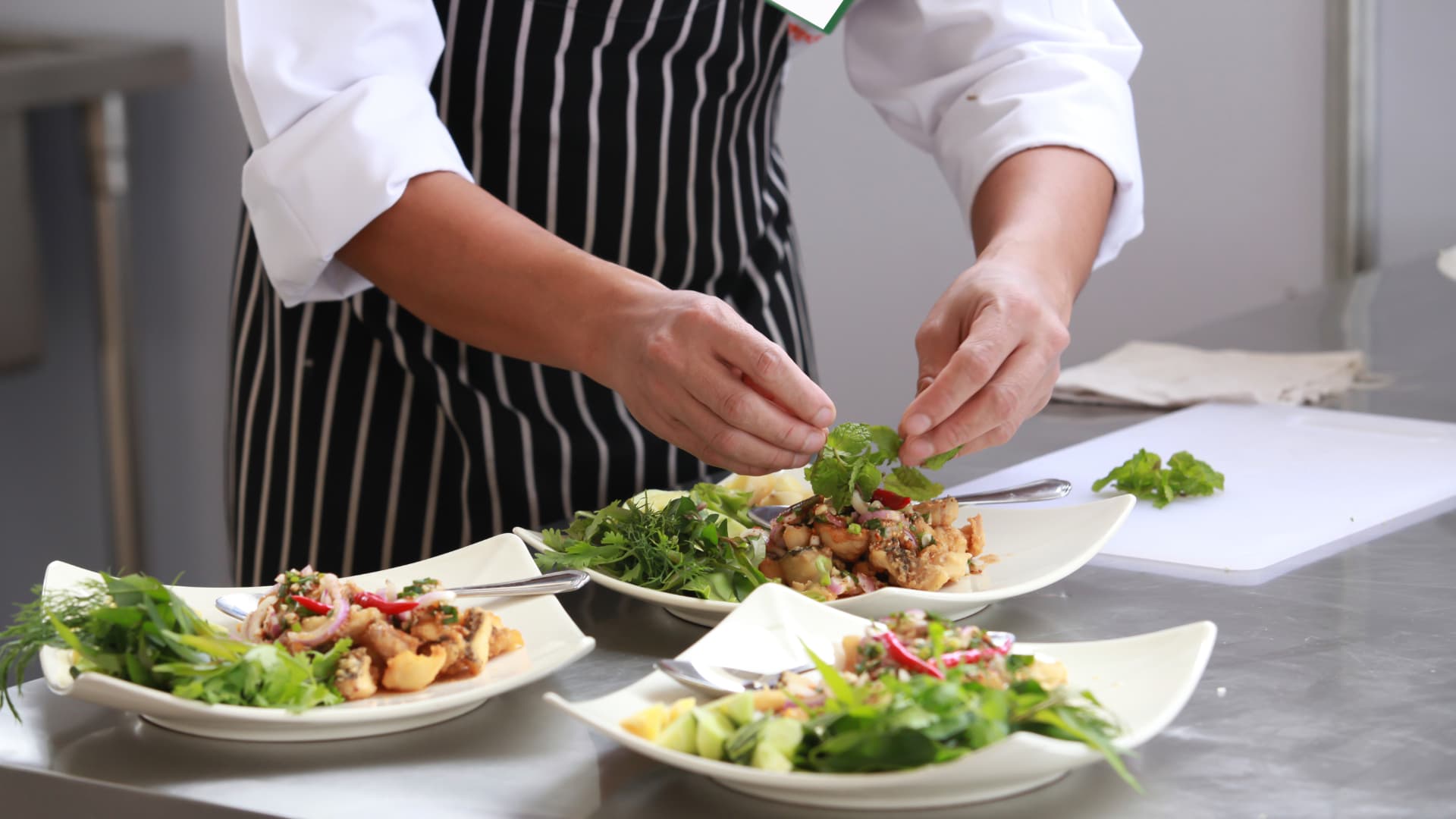How to Open a Restaurant: The Ultimate Guide for Foodservice Operators
So you want to open a restaurant?
Starting a successful commercial foodservice business is a dream for many, but anyone with experience in the foodservice industry knows that it can quickly turn into a nightmare if you don’t plan and execute your business efficiently.
Whether you are a longtime restaurant entrepreneur or a chef with a passion for creating delicious food, knowing how to open a restaurant the right way can make all the difference between your success or failure in the foodservice industry.
In this guide, we use our years of service in the commercial foodservice industry to create an exhaustive outline of some of the steps you should plan for when preparing to open a new restaurant.
From concept to marketing, the following information was created to help you better understand the process of taking a restaurant from concept to market.
Step 1: Develop your Restaurant’s Concept and create a Comprehensive Business Plan
Before you dive into building out your physical location, you have to start with the basics.
First and foremost this means spending ample time creating a unique concept for your restaurant.
Your restaurant’s concept includes a few critical components to consider, including:
- The overall look, feel and ambiance of your location
- The type of food you plan on serving
- The style of restaurant your business will be
- The expected size of your establishment
Some great questions to ask yourself as you start to create your restaurant concept include:
- Will my restaurant be fine dining? A Casual Eatery? A Bakery that serves fresh baked goods? Fast Food?
- What cuisine do you plan on serving? Will you have multiple styles? Or will you focus on one cuisine type?
- Who are your targeted guests? Are you creating a restaurant that caters to a younger crowd or an older demographic?
- Is there a theme that you are building your business around?
- What characteristics will make your restaurant unique and stand out from the crowd?
- Where in your expected city or location would be best to attract visitors with your concept?
Once you have a clear vision of what sets your restaurant apart from all your local, national or global competitors, it’s time to dive into the creation of a comprehensive business plan that can act as the blueprint to getting your restaurant’s doors open for service.
And more importantly, unless you are self-funding a new restaurant, your business plan can make all the difference in helping you target and secure outside funding to help bring your restaurant concept to life.
Some of the important considerations you should include in your Restaurant Business Plan include:
- A comprehensive overview of your concept
- Executive Summary of who the founders of the business are and their experience in the foodservice industry
- Market Research of similar restaurant competitors and the overall local niche.
- Initial Concept of the Restaurant’s Menu
- Financial Projections
- A clear marketing strategy and expected budgetary requirements
- Plans for staffing and hiring
- An operational model of how the front of house and back of house will be managed
Step 2: Secure the Appropriate Funding and Financing
As anyone with any knowledge of the foodservice industry knows, starting a restaurant requires a significant financial investment.
Depending on your location, size of your establishment, local competition and other factors, the costs can range anywhere from $100,000 to well over $1 million dollars to build out, market and open a new restaurant.
Unless you plan on self-funding a new restaurant location, which can be quite risky, securing funding or financing for your development costs is the norm for most new operations.
The best way to secure funding for a new potential restaurant is to pitch your business plan for your restaurant concept to various financial providers.
Some of the best places to look for funding include:
- Private Investors
- Bank Loans
- Small Business Administration (SBA) Loans
- Crowdfunding
A detailed financial plan that includes estimated start-up costs, operating expenses and break-even analysis is imperative to help attract investors or lenders to assist with the funding of your new operation.

Step 3: Choose the Perfect Location for your Restaurant
You’ve heard it said a million times:
Location, Location, Location.
In the world of commercial foodservice, choosing the right location can make all the difference in your short – and long-term success or failure.
A new restaurant needs to consider a location that not only allows for the effective management of your front and back of house demands, but that aligns with your demographic while providing high visibility and foot traffic.
Some of the factors that you should consider when searching for the ideal location for your new establishment include:
Location size: How big of a space do you need to effectively deploy your new concept?
Demographics: Does the area that you are considering attract the correct target audience to power the success of your operation?
Competition: What type of similar restaurants would you be competing against in the chosen location? How can you make yourself stand out from this competition to provide a better experience for your target audience?
Accessibility: How close to popular transportation access is the location? Is there considerable foot traffic? What is the parking situation like? What about public transport?
Rent & Lease Terms: What are the required lease terms? Do they match up with your budget and expectations?
Making sure to consider some of these factors when choosing your new location can help you avoid common pitfalls and increase the chances of the success of your new restaurant.
Step 4: Obtain Necessary Licenses and Permits
Once you’ve secured your new location, it’s time to dig into the setup of your new foodservice operation.
First up is addressing any licenses and permits that are required in your local municipality to operate legally.
This process can be both time-consuming and demanding, so getting started before you ever break ground on your new concept can make all the difference to a smooth grand opening.
While you will need to check with your local authorities to determine the full scope of what is required, some of the permits you may need to consider, but not be limited to, include:
- Business License
- Food Service License
- Health Department Permits
- Liquor License (if your operation plans on serving alcohol)
- Business Formation and Tax Employer Identification Number (EIN)
- Fire and Safety Permits
- DBA (Doing Business As) Registrations
- Hazard Analysis Critical Control Print (HACCP) Plan Approval
- Grease Trap Permits
- Certificate of Occupancy
- Resale Permits
- Catering License
- Raw Meat & Seafood Permits
- Workers’ Compensation Insurance
- Unemployment Insurance
- Signage Permits
- ADA Compliance
Step 5: Build out your Restaurant Concept and Purchase all Necessary Equipment
Now’s the time to bring your restaurant concept to life!
But remember that the layout of your concept will directly affect your restaurant’s overall efficiency and customer experience.
Here are a few things you should consider as you break ground and turn your empty space into the restaurant of your dreams:
Design of Concept and Aesthetics: What needs to be designed and built to deliver on the overall feel and vision for your restaurant? Consider things like your décor, furniture, lighting and other critical factors.
Efficient kitchen design: Make sure that you ensure an optimal back-of-house design to optimize the work of your chefs and staff.
POS Systems and other Technology: Invest in top-quality POS (Point of Sale) systems to help make your transaction seamless, to make payment processing easy for both staff and customers.
Commercial Kitchen Equipment: Invest in quality commercial kitchen equipment that is built to last for the life of your operation. Here at Channel Manufacturing, we design and manufacture standard-size and customized equipment that is built for foodservice operators.
Step 6: Develop and Test your Menu
As you can probably imagine, your new restaurant’s menu should match, or complement the overall concept and vision of your establishment.
Now that you have your location being designed and built out, it’s time to focus on creating a menu that is carefully crafted to attract your demographic.
Some quick tips to help you develop a powerful menu for your restaurant include:
Keeping the menu strategic: Create and offer dishes that are in line with your core offerings without giving too many options that can overwhelm new guests.
Use high-quality ingredients: Where possible, use local, fresh ingredients to help provide a higher quality food experience for guests.
Focus on your strengths: Is your head chef a master of one culinary discipline? Craft a menu that is easily managed by your staff while centered on the experience of your foodservice talent.

Step 7: Hire and Train Staff
Your team plays a critical role in the success or failure of your foodservice business.
Choosing team members with experience in the world of commercial foodservice can help give your location a leg up on both competition and customer experience, which is necessary to make you a success.
Some of the top positions to fill include:
- Executive Chef
- Sous Chefs and line cooks
- Servers
- Bartenders
- Hosts/Hostesses
- Janitorial and back-of-house support
- Restaurant Manager
Training these valuable members of your team around the concept, mission and vision of the new restaurant can help provide a consistent approach to guest services, helping to make your restaurant more effective and efficient.
Step 8: Establish Reliable Supplier Relationships
Getting high-quality food consistently is paramount to the overall success and efficiency of a new restaurant.
Building relationships with reliable suppliers ensures not only consistent quality but also cost control in the long term.
Some ideas for sourcing quality supplier relationships include:
- Local Farms for fresh produce
- Fresh seafood and meat distributors
- Alcohol and Beverage Suppliers
- Packaging vendors
- Equipment and Supplies vendors
Step 9: Start marketing your Restaurant
Now that everything is coming together with the concept and deployment of your new venture, it’s time to start marketing your new location to help build anticipation and start attracting customers.
Be sure to plan and utilize campaigns across channels like:
Social Media Marketing: Capitalize on popular social channels with both paid and organic content of your new restaurant. Highlight the food, the location and other things that set you apart.
A Professional Website: Show off your food, take online reservations, display your menus, and steer organic and paid traffic through the website to customers.
Influencer marketing: Partner with local or regional social media influencers to spread the word about your new restaurant.
Email Marketing: Start building an email list and begin the process of building a relationship with your customers through targeted email marketing campaigns with loyalty offerings, giveaways and more.
Paid ad campaigns: Create a buzz for your grand opening with paid social ads and optimize ongoing ad channels to bring in new leads to your operation.
Taking advantage of powerful modern marketing strategies can help you get people through the door and convert them into repeat customers.
Step 10: Host a Successful Grand Opening
The grand opening of your new restaurant sets the stage for your business to make a great first impression in your community.
Some of the tips to help you have a successful grand opening ceremony include:
Planning a “soft” opening can help you iron out kinks in your restaurant operation and get you ready to start welcoming guests.
Offer special promotions and discounts to help bring new guests through the door.
Invite local media and social influencers for free meals at your establishment to help spread the word.
Have your staff trained and provide an exceptional customer service experience to help guests feel excited about your new location.
Final Thoughts: The Road to Success with your new Restaurant
Opening a restaurant can be a challenging endeavor for even the most seasoned foodservice professionals.
But with careful planning and diligent execution, it’s possible to create a wildly successful commercial foodservice establishment that is the talk of the town.
The foodservice industry is insanely competitive, but with a detailed business plan, unique concept, great location, excellent menu, strong marketing and great service, you can build a thriving restaurant.
When it’s time to think about selecting quality commercial foodservice equipment, be sure to have a look at our collection of American Made, specially designed equipment built by foodservice professionals for foodservice professionals.
Opening a restaurant presents a unique set of challenges, but the reward of seeing your concept come to life and being loved by happy customers enjoying your food makes it all worth it!
We hope that this article has provided some insight and guidance as you set off to build the restaurant of your dreams.
Best of luck as you become a successful restaurateur!

Welcome to our Foodservice Resources!
Channel Manufacturing is dedicated to servicing Food Storage and Material Handling Equipment professionals throughout the distribution and consultant network.
Our Mission
We’re Channel Manufacturing. The foundation of our mission, anchored by exceptional customer service, is to be your uncontested go-to resource for food storage and material handling solutions across a diverse array of traditional and non-traditional applications.
Request a Quote for your Project
We’re passionate about providing the highest quality standard size or customized foodservice and material handling equipment. Our experienced team is ready to help with your next project!
This site is protected by reCAPTCHA and the Google Privacy Policy and Terms of Service apply.





